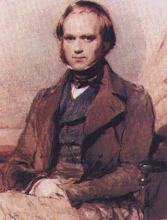
How can an herbivore protect itself from carnivorous predators?
Strategies seen today among predators and prey of the African Serengeti apparently existed among dinosaurs in ancient ecosystems.
Paleontologists from Ohio University counted growth lines in the legbones of hadrosaurs, a group of herbivivorous duck-billed dinosaurs. By counting the number and spacing of growth rings, paleontologists can determing the animals’ age and its relative growth rate—the fast growth seen in juveniles is characterized by widely-spaced growth rings; growth slows or stops at adulthood, shown by close spacing of the growth rings.
The scientists found that hadrosaurs reached their adult size by age 13. In contrast, the carnivorous Albertosaurus reached full size at 20-30 years. Maturing quickly gave hadrosaurs an advantage over their predators, as they could produce offspring at an earlier age, and their offspring grew quickly to maturity.


No comments:
Post a Comment